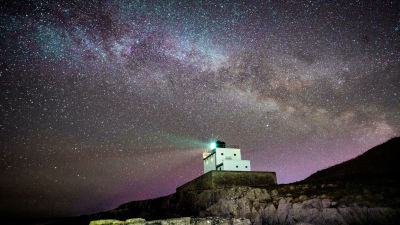Explainer
Stargazing in June: When and where to look for miraculous sights

June is a great month for stargazing, with shorter nights meaning more to see in the early hours of the morning.
Here's what to look out for and when.
Alignment of the planets
You'll have a better chance at spotting the brighter planets (Mercury, Venus, Mars, Jupiter and Saturn) during the mid to end of this month.
Earlier sunrises will make the planets a little clearer, with the full line up most visible from around 4am.
If you're up for an all-nighter, keep an eye out for Saturn at around 1.30am, followed by Jupiter, Mars around 2.30am, and Venus at 3.30am.
The more distant planets, Uranus and Neptune, will only be visible with binoculars or a telescope.
Closer to home - look out for the moon
It's an exciting month for stunning views of the moon too - and it's a little closer to home so less likely to be impacted by bad weather and poor visibility.
There'll be a supermoon on June 14 - when the full moon coincides with the moon being closest to earth in its orbit - giving us something a bit brighter and a bit bigger.
The movement of the moon through June is a helpful pointer too for where to look to find the planetary alignment.
On June 18 and 19, the moon will be 75% as it passes Saturn.
On June 22 it will be less than half illuminated as it sweeps under Jupiter.
On June 23 it'll be in a similar state as it passes Mars.
On June 26 and 27, as the moon passes Venus and Mercury, it'll be only 5% illuminated.
Other spectacular sights
Summer months provide the perfect opportunity to glimpse towards the centre of our galaxy. Avoid light pollution and look south from really dark-sky sights to get a chance of some fantastic views of the star-packed core of the Milky Way.
If you turn your gaze north, there's a chance of spotting the glow of noctilucent clouds.
Also known as "night-shining" clouds, they appear when tiny ice crystals high up in the atmosphere are lit from underneath by the sun sitting just below the horizon.
Best chances of catching a glimpse are between May and August in the northern hemisphere. Look north, towards the lightest patch of the night sky, particularly in the few hours after sunset and before sunrise.
Want a quick and expert briefing on the biggest news stories? Listen to our latest podcasts to find out What You Need To know...